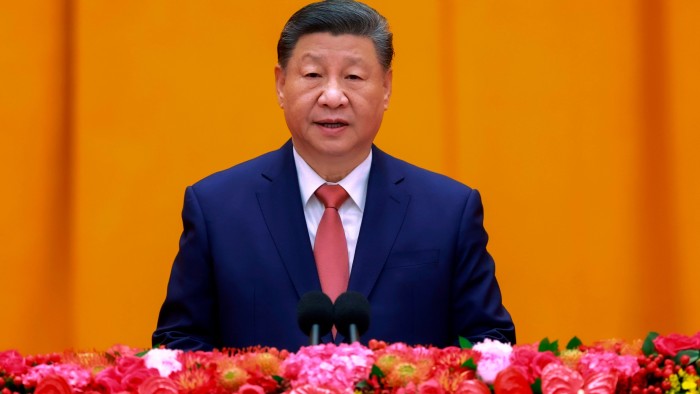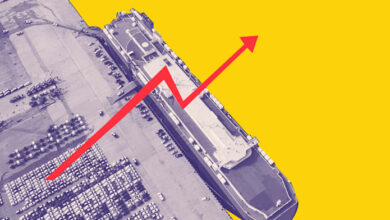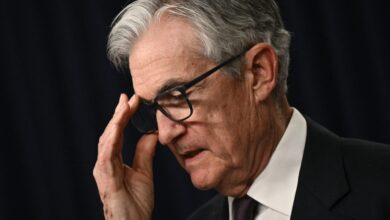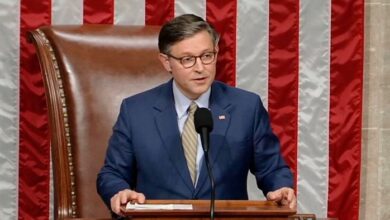China hits back with limited response to Donald Trump’s tariffs

Beijing has retaliated against Donald Trump’s tariffs on imports from China with duties of its own but limited their scope in a possible attempt to avoid a full-blown trade war.
The measures against US products ranging from liquefied natural gas to cars will take effect on February 10. They were announced on Tuesday, hours after the US president’s new additional tariff of 10 per cent on Chinese goods came into force.
Beijing also said it would launch an antitrust probe into Google, whose search engine is blocked in China.
Beijing’s new tariffs target about $14bn of goods, Citigroup analysts said — less than 10 per cent of total imports from the US in 2023, the last year for which there was full data.
The move was “not an escalatory response”, said Chris Beddor, deputy China research director at Gavekal. “They’re clearly aiming for negotiations and a deal.”
Trump unnerved allies and investors on Friday by announcing levies on Canada, Mexico and China, which he accused of failing to curb immigration and the flow of the deadly opioid fentanyl into the US.
Beijing has taken some measures to stem the flow of ingredients for fentanyl — known as precursor chemicals — since former president Joe Biden and China’s leader Xi Jinping held a summit in San Francisco in late 2023. But the Trump administration says the Asian country is subsidising Chinese companies that make the precursors.
Trump has held off on his campaign pledge of imposing 60 per cent tariffs on Chinese exports to the US. People familiar with the situation said he wants to do a deal with Beijing, so opted to initially hit China with a lower tariff rate.
The trading relationship between the US and China has shaped both countries’ economies in recent decades. But Beijing’s share of the US’s total imports has fallen markedly since Trump introduced tariffs in his first term in office.
China’s latest measures against the US will impose tariffs of between 10 per cent and 15 per cent on US LNG, coal, crude oil and farm equipment. Beijing will also impose tariffs on some car imports from the US and additional export controls on five rare metals.
Trump is expected to speak to Xi in the coming days, prompting hopes the two leaders will be able to work out a deal to avert a full-blown trade war between the world’s two largest economies.
In response to the Chinese retaliation, White House National Security Council spokesperson Brian Hughes said: “President Trump is committed to saving American lives by using his authority to end the flow of fentanyl over our southern and northern borders that is originating from China. This is about prioritising the safety and national security of Americans.”
Hong Kong’s Hang Seng index, which had risen as much as 3.3 per cent in early trading, shed some of its gains to close up 2.7 per cent, while the offshore renminbi strengthened slightly to Rmb7.32 and oil prices edged down about 1 per cent.
Beijing’s initial retaliation was a “more symbolic move”, analysts at Oxford Economics said, adding the decision amounted to an increase in the overall weighted effective tariff rate of 2 percentage points on US imports.
Beijing’s antitrust regulator announced the investigation into Google for suspected violations of anti-monopoly laws on Tuesday. While the search engine is blocked in China — along with most of parent company Alphabet’s businesses — the US group profits from Chinese businesses advertising abroad.
Chinese phonemakers also widely use its Android operating system, a long-standing point of frustration for the country’s officials, who chafe at American control of the software underpinning most smartphones.
During the first Trump administration, Washington blocked Huawei from Google’s software ecosystem, damaging sales of the Chinese national champion’s smartphone outside its home market.
Referring to Washington and Beijing’s moves this week, Louise Loo, China lead economist at Oxford Economics, wrote in a note that “the trade war clearly [is] in the early stages”.
Trump put his tariffs against Canada and Mexico on hold for a month following last-minute talks on Monday with Canadian Prime Minister Justin Trudeau and Mexican President Claudia Sheinbaum.
China’s finance ministry said the US tariffs violated World Trade Organization rules. “It is not only unhelpful in solving its own problems, but also undermines the normal economic and trade co-operation between China and the US,” it said as it announced the new tariffs.
The ministry said US coal and LNG exports would face an additional 15 per cent tariff, while crude oil, agricultural machinery, cars and pick-ups would receive a 10 per cent tariff.
China was the second-largest buyer of US coal in the first three-quarters of 2024, accounting for 10.9 per cent of total coal exports and trailing only India, according to data from the US Energy Information Administration.
The country accounted for 2.9 per cent of US natural gas exports from January to November 2024, according to EIA figures.
China’s commerce ministry on Tuesday also announced export controls on tungsten and more than two dozen other rare metals products and technologies, effective immediately.
Goldman Sachs analysts described China as a “dominant producer” of the metals subject to the controls, adding “critical minerals [were] an increasingly important source of leverage”.
The bank noted Beijing blocked exports of several other key minerals in December — a move that hit the US semiconductor industry.
China on Tuesday also expanded its “unreliable entity list”, a national security blacklist, by adding US biotech group Illumina and PVH Group, an American clothing maker whose brands include Calvin Klein and Tommy Hilfiger.
The ministry had previously investigated PVH for alleged discrimination against cotton from Xinjiang, the western region where Chinese authorities are accused of human rights abuses including forced labour.
Additional reporting by Zijing Wu in Hong Kong
https://www.ft.com/__origami/service/image/v2/images/raw/https%3A%2F%2Fd1e00ek4ebabms.cloudfront.net%2Fproduction%2Ffddea3b3-8717-479f-af85-49398e21d4a9.jpg?source=next-article&fit=scale-down&quality=highest&width=700&dpr=1
2025-02-04 11:56:04





